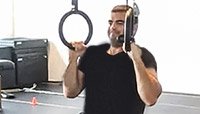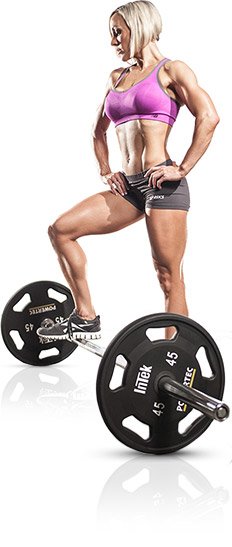
Before beginning any strength-training program, it is advisable that a lifter determine their one-rep max (1RM) to gauge their current strength level. Essentially the result of one-repetition-maximum testing will give a precise indication of how much weight one is capable of lifting for one repetition across a range of exercises, sport specific or otherwise.
Upon learning of their one-lift capacities, one can design their program around these maximal weights. For example, it might be suitable for power-training that 85% of a one repetition maximum is used as a training weight for the bench press, squat, and dead-lift.
For toning, or developing a defined body for the beach, 70%, or lower, might be more appropriate.
In addition to consistency and effort, precision is one of the keys to a successful training experience. 1RM will help to ensure that the amount of weight lifted is more precisely in line with ones program objectives. This article will explain exactly how to conduct one-repetition-maximum testing and suggest ways in which test results can be applied across a range of training objectives.
Why Use 1RM Testing?
Determining maximum load capabilities is important when aiming to:
- Establish the load settings for an exercise program.
- Determine the progress associated with an exercise program, and the efficacy of that program.
- Rank ones muscular strength based on standard norms. Standard norms are used to determine a clients relative strength ratio. To determine muscular strength based on bodyweight, divide the total amount of weight lifted for 1RM by clients bodyweight.
- For example, if a 180lb male lifter has achieved a 1RM of 220lb on the bench press his strength ratio would be 1.22. This figure can be used to rank the clients strength from poor to excellent on this particular lift.
Advantages & Disadvantages Of 1RM
The main advantage of 1RM testing is that no special equipment is needed, as the lifter will be tested with free weights. In fact, given its efficacy and practicality, the 1RM test is widely regarded as the gold standard in strength testing among personal trainers world-wide.
The 1RM also gives the lifter a feeling of accomplishment as it is often very empowering to see the result of one maximum lift! A bench-mark is set which serves as a target to inspire the lifter to become stronger. This works wonders for program adherence. Perhaps most importantly, 1RM testing, if done properly, is the most accurate form of strength testing.
Like all fitness testing procedures, the 1RM does have some limitations. However, this does not warrant forgoing it in favor of other tests. It has been shown that, in light of its many advantages, 1RM testing should remain a cornerstone strength-testing procedure.
With 1RM testing, it takes a while to finally get to the 1RM set as there are generally 3-4 warm-up sets to begin with, and this could be considered time consuming, and consequently a disadvantage. Also, handling the highest weight on an actual 1RM can be dangerous to the lifter and/or the spotter - hence the thorough warm-up and insistence on correct form during the test.
In fact, injuries are more likely to occur with 1RM testing as opposed to 6RM or other methods. Finally, there is a tremendous amount of stress on the muscles at work during 1RM testing and this could interrupt ones established training routine in that 24-hours rest will be needed before the test.
How To Conduct A 1RM Test
Before beginning the test it is important to follow these steps:
- Warm up thoroughly.
- Always have a training partner to spot you.
- Leave at least 24 hours between exercising with weights and the test.
The 1RM test often comprises just a couple of exercises - the bench press and leg press. However, to get a better indication of overall strength it can be used for many compound, or even isolation, exercises.
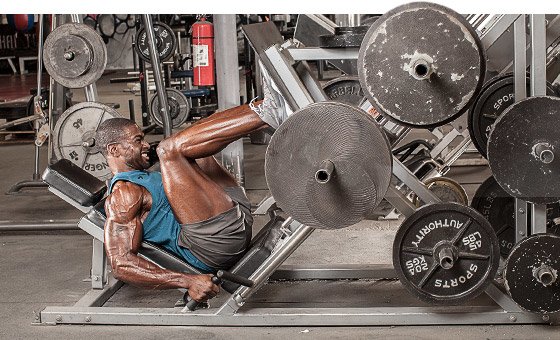
The 1RM test itself is actually quite simple, contrary to what one might think, given its status as one of the best strength tests available.
To conduct 1RM testing do the following:
- Decide upon which muscle groups will be tested, and which exercises will be used to do facilitate testing. Many tests revolve around the main power movements with good reason, as these give an accurate indication of how strong a grouping of muscle are. This saves time and energy.
- However, most exercises could potentially be used (biceps curls and triceps push-downs in addition to bench presses and squats for example). Using multiple exercises helps one to better design the subsequent program as percentages of 1RM can be calculated for all exercises, as opposed to just a few.
- Next, begin testing by completing a set of an exercise with a weight of which at least 15-repetitions can be achieved. Do likewise with all exercises.
- Incrementally add a small amount of weight over subsequent sets, of each exercise, until, at a certain weight, no repetition can be achieved. The weight lifted before this set would be the 1RM. Before each 1RM test set allow for 3-5 minutes rest.
- Document all 1RMs in a training diary and use this information to design a training program in line with specific training goals.
- Re-test every 5-6 weeks to monitor training progress. The same equipment and exercises should be used during successive testings. Also, try to test under the same conditions (temperature, lighting, nutrient intake etc).
Applications For The 1RM Test
Once 1RM test results are established, percentages can be calculated from these to form the basis of ones training program. The following two exercise sessions are examples of the ways in which 1RM testing can be applied.
Chest & Shoulders Power Session
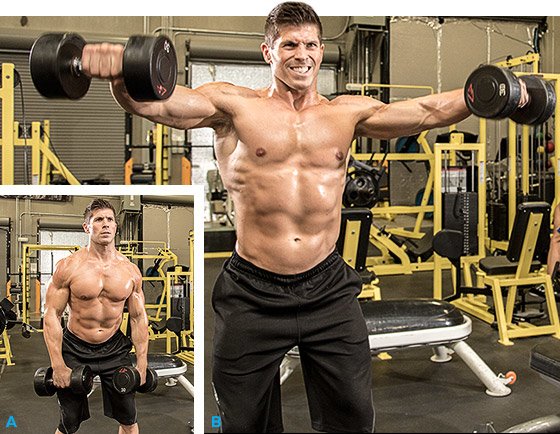
Side Lateral Raise
If, hypothetically speaking, a trainer achieved 1RMs of 300, 140, and 80lbs for the bench press, shoulder press and side laterals respectively, a goal of power development would dictate that 85% of these one repetition max lifts be used to determine subsequent training load settings.
This would mean that for the 300lbs 1RM on the bench, 255 lbs would be used as a training weight. With the shoulder press and laterals 119 and 68lbs respectively would be used, remembering that the rep range for power training is between 4-6.
Chest & Shoulders Endurance Session
If our hypothetical trainer were to focus on lighter weights for endurance purposes, a smaller percentage of the 1RM would be used: 70%. So, with our same chest and shoulder session, using the same 1RMs, the training poundages would be 220, 98 and 56lbs for the bench, shoulder press and laterals respectively.
Obviously, these calculations would be extrapolated to all exercises subjected to 1RM testing. Again, these calculations are examples of some of the applications of 1RM testing and changes to 1RM percentages could be made depending on the nature of the training system in question. Powerlifters, for example, might want to use 90+% for their training weight given their competition weight will be essentially be a maximal lift.
Conclusion
There we have it. A pretty concise overview of 1RM testing. As mentioned, 1RM testing is a very important procedure as it helps to determine specific load settings for any given training routine. It also enables one to determine the efficiency of their training program and assess the progress they have made.
If done correctly, 1RM testing is one of the safest, most accurate, strength testing procedures available. Take advantage of this gold-standard in fitness testing to further your clients training aspirations.
Recommended For You
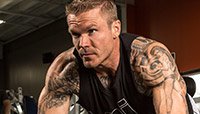
6 QUICK FAT-BLASTING WORKOUTS
Not everyone has an hour to work out. HIIT your muscles hard with these short, intense workouts designed to burn maximum calories in minimum time!
SIX-PACK SPECTACULAR!
These 20 ripped BodySpace members prove that with diet and workout dedication, you can build an insanely shredded set of awesome abs!